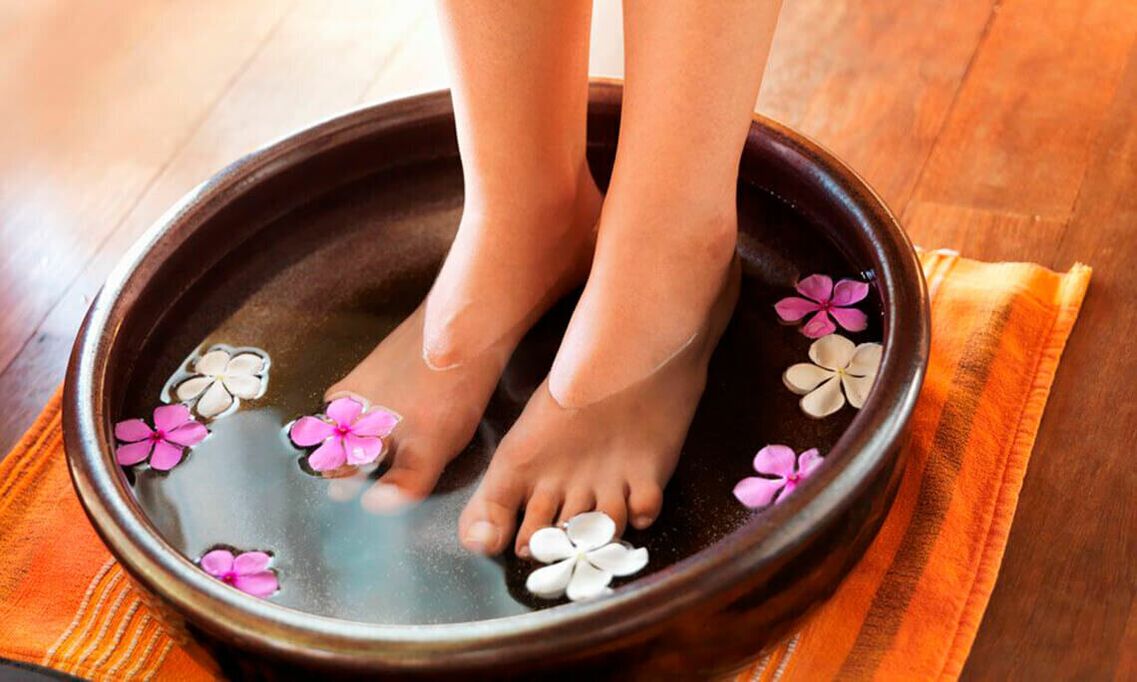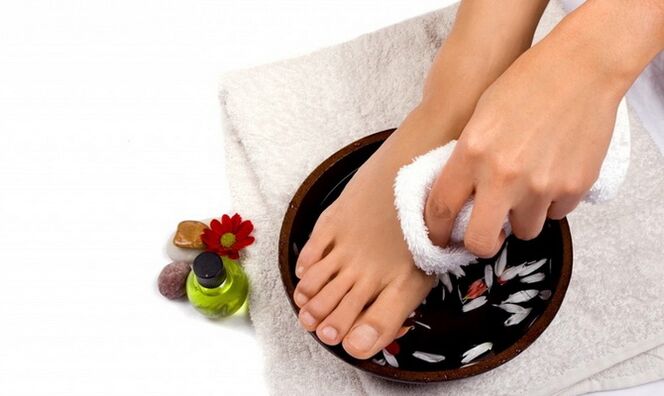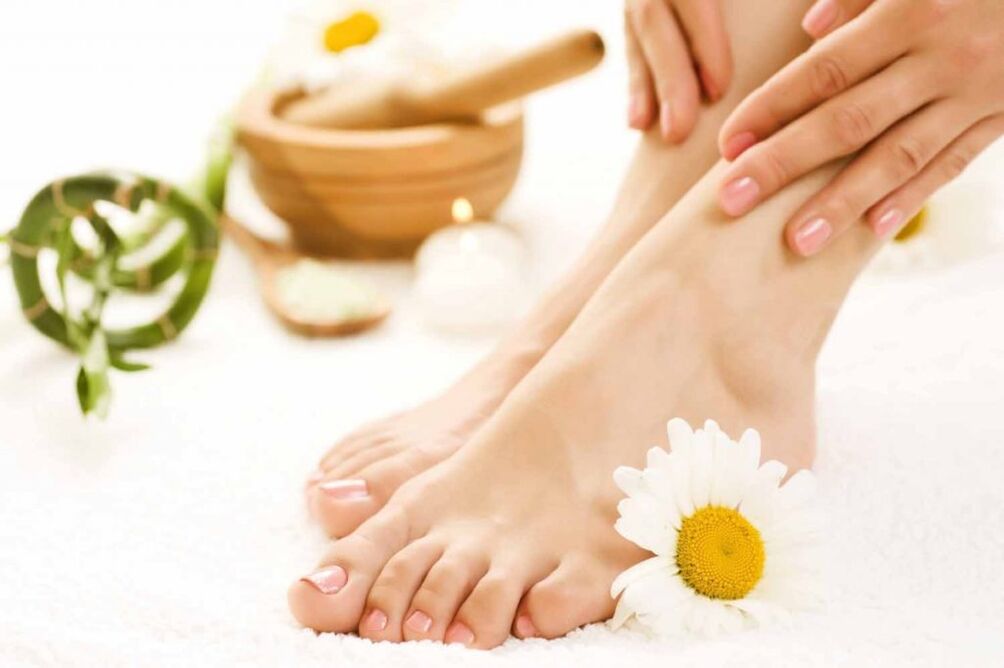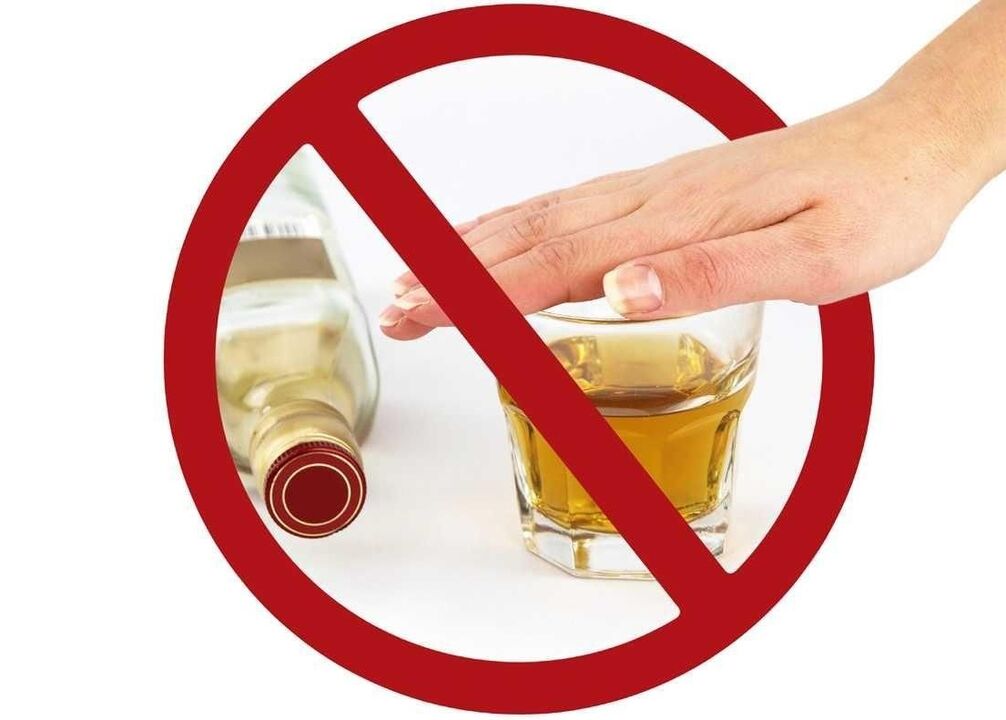
Treatment of fungal foot infections with topical preparations is performed on an outpatient basis. For a speedy recovery, it is important to follow medical advice on how to treat leg fungus at home and how to properly perform the necessary procedures.
general rules
Treatment and hygiene measures should be carried out on a regular basis, and treatment cannot be interrupted until the fungus is completely eliminated. The duration of the recovery process depends on the degree of neglect of the disease and the area of the lesion.
To successfully treat and prevent infection in others, the following basic rules are recommended:
- During the entire treatment period, you should refuse to go to the swimming pool, sauna, beach, pedicure room.
- Patients must have separate foot hygiene treatments: file, pumice stone, soap, towel, etc.
- Shoes must be thoroughly disinfected and dried. The insole and inner surface of the shoe can be treated with special solutions or sprays.
- Feet must be kept dry at all times. Pathogens of fungal diseases thrive in warm, humid environments. After washing, wipe your feet with a clean towel, and use talc, talcum powder, and talcum powder if your legs sweat too much.
- Pay special attention to socks. It is best to choose socks made of natural cotton. This material absorbs moisture well and provides normal ventilation to the skin of the feet. Socks should be changed as often as possible, and used products should be boiled.
- After the diagnosis is confirmed with the results of laboratory tests of infectious substances, drug treatment is strictly in accordance with the instructions of the attending physician.
The keratinized skin on the fingers and soles of the feet must be constantly exfoliated using a special foot brush or pumice stone. Otherwise, fissures may form through which the fungus can penetrate deep into the epidermis and bloodstream.
Comfortable shoes made of natural materials should be preferred to prevent excess moisture build-up.
foot bath

Therapeutic baths are an indispensable item for the treatment of mycosis of the legs at any stage of the development of the infection process. The procedure of steaming the feet in hot water with the addition of various active ingredients is a preparatory stage before the application of the main antifungal drugs.
Foot baths can be used twice a day or daily at bedtime. The duration of the procedure depends on the composition of the bath solution, but does not exceed the threshold of half an hour.
Healing Herbs
For a foot antifungal bath, use herbal decoctions:
- banana;
- Artemisia;
- burdock;
- milkweed;
- yarrow;
- Calendula flower.
Herbs can be mixed or steamed individually. For best results, the decoction must be thick enough. The desired amount of plant material must be poured with boiling water. Once the temperature of the soup is skin-tolerable, you can place your feet in the tub and steam them for 15-20 minutes.
Celandine
Celandine preparations are commonly used to combat leg fungus. For the preparation of a foot bath, it is recommended to use dried celandine. You can buy it at a pharmacy or prepare it yourself.
Prepare the decoction at a rate of 8 tablespoons of grass per 2 liters of boiling water, then cool to a temperature of 50°C and place in a convenient container. The foot should stay in the tub until it cools down. The course of treatment is 20 days.
vinegar
Acidic environments have adverse effects on pathogenic microbial communities that cause fungal diseases. As an effective home remedy for foot fungus, folk remedies use vinegar baths.
Vinegar is taken in a ratio of 100ml essence per 2 warm water. The approximate duration of this process is one third of an hour. Home remedies for this fungus can significantly speed up treatment with modern medicines.
soda and salt
The salt and soda solution used to soak your feet will allow you to fight the fungus on your feet in the initial stages. There are many ways to prepare your feet with salt and soda at home. The most simple and effective recipes:
- Dissolve 2 tablespoons of table salt and baking soda in 2 warm water and soak your feet for up to 20 minutes.
- In two liters of boiling water, add equal parts oak bark puree, a few drops of peppermint and tea tree oils, 2 tablespoons of soda water, and 2 tablespoons of sea salt. The steaming time is half an hour. The duration of treatment is 14 days.
- In warm water, whisk 1 tablespoon of soda water and kosher salt, and add a few tablespoons of antibacterial liquid soap (you can use tar). Steam the feet in the prepared solution for up to half an hour, and at the end of the procedure, allow the feet to dry without wiping or rinsing with water.
Salt helps strengthen nails and regenerate epidermal tissue, and sparkling water softens the skin and cleans and disinfects the surface of the feet. Salt solutions containing iodine mixtures have a pronounced bactericidal effect.
Steaming your feet with vodka, ammonia, propolis, espresso, birch tar, hydrogen peroxide, and garlic juice helps a lot.
compress, rub, lotion

You can get rid of fungus on your legs with compresses and various rubs according to an alternative medicine formula. The procedure is carried out after careful handling and steaming of the legs.
Apply the healing block to the affected area, secure with a gauze bandage, and insulate it with a clean sock. If there are no caustic substances in the composition of the compress, the bandage will sit overnight.
The most popular recipes for homemade antifungal compresses for foot fungus:
- Apply chopped fresh Rowan leaves to infected skin, cover with burdock leaves, and wrap in cellophane.
- Apply 35% salicylic acid ointment evenly to the fungal lesions and wrap with plastic wrap. Change the bandage once a day.
- Pass a few cloves of garlic through a press and mix with equal parts butter until smooth. The resulting substance was applied to the painful area, wrapped in a film, overnight. Garlic can sting, but it's a great way to heal foot fungus quickly.
- Onion porridge is used for compresses in pure form, you just need to change the bandages as often as possible. If the itching becomes unbearable, you can dilute the onion 1: 1 with petroleum jelly.
- Nighttime acetic acid compression showed good results. It is more convenient to use a cotton pad dipped in a weak solution of vinegar essence.
- Alcohol wraps help with foot fungus. Wrap a small piece of linen fabric soaked in ammonia solution around the sore leg and insulate with polyethylene. The course is designed for 7-10 days.
- Mashed potato sprouts stick to vodka for a day. Prepared porridge for foot compresses before bed.
- If the fungus is in the interdigital folds, you can apply peppermint and salt syrup to the affected skin. This remedy perfectly combats the manifestations of itching, eliminating unpleasant odors and other symptoms.
Rubbing the affected skin with an alcohol solution of birch tar, iodine, garlic juice, tea tree oil, and celandine can help get rid of leg fungus quickly at home.
If the fungal disease has reached an advanced stage, many medicinal topical antifungals are recommended in the form of compresses.
medicinal antifungal
The quickest way to cure a fungal infection is the right combination of folk remedies and antifungal medications. Mycosis drugs are mainly divided into two categories: topical and systemic.
In the absence of contraindications, oral antifungals are used for advanced forms of fungal drug treatment. Taking tablets is associated with liver risks and should only be taken in the dosage prescribed by your doctor.
The choice of local medicine depends on the type of disease pathogen and the patient's financial ability. Removing the fungus can take months, and not everyone has access to expensive medicines.
Topical preparations are available in the form of creams, gels, ointments, sprays, varnishes and solutions. Well-known pharmaceutical companies produce a full range of products for comprehensive fungal treatment.
Regardless of the form, brand and price category, the main difference is the type of active ingredient in the drug. It is this criterion that determines the effectiveness of a drug against a particular type of infectious agent.
Antifungal drugs contain bacteriostatic substances: sertoconazole, bifonazole, ketoconazole, oxyconazole, terbinafine, cyclopyrrolidinamine, amorolfine.
If the treatment is carried out continuously according to the accompanying instructions, in the early stages of the development of the disease, when the first signs of infection appear, it is easier to defeat the fungus on the legs with the help of topical preparations.
Personal hygiene rules prevent leg fungus

Preventing foot fungus starts with personal hygiene measures designed to prevent infection and create an environment that is not conducive to microbes.
It is important to remember that fungal lesions of the feet can persist for a long time with little to no manifestation, and they are characterized by a chronic relapsing course.
The pathogenic microorganisms that affect the feet are extremely tenacious, and they prefer damp, damp, non-ventilated intertoe folds, the lower part of the sole, and the sides.
Here is a short list of personal hygiene habits (well known, but not always followed) to avoid contracting this compulsive infection:
- keep your feet dry and cool;
- Regular and timely pedicures, using properly sterilized tools, using modern aids and care products;
- Wash your feet daily with warm soapy water and antibacterial soap if necessary, several times a day;
- Dry your toes from the base to the tip, the skin between the fingers, the entire foot;
- fight sweaty feet
- If necessary, use an antifungal foot powder - antifungal cosmetic and medicated creams, gels, nail polishes;
- walk barefoot, at least at home, in the country;
- keep your toes slightly apart;
- In public places such as locker rooms, showers, gyms, fitness clubs, etc. , do not go barefoot - wear flip-flops (rubber slippers, waterproof slippers);
- Do not use other people's sponges, towels, towels, slippers (even at home);
- If infection occurs, separate individual towels or use disposable tissues for the affected area;
- Wear comfortable, well-fitting shoes made of leather and other natural materials;
- Avoid rubber and plastic shoes - an environment conducive to the growth of skin mold;
- Keep shoes clean, dry, ventilated, and treat inside of shoes with antifungal powder or aerosol;
- In summer, wear light, well-ventilated shoes;
- Change sneakers in a timely manner; if they can be washed, at least once a month;
- Change socks (knee socks, stockings, tights) more frequently, especially in case of hyperhidrosis, if necessary - more often;
- Wear socks made of absorbent material (natural fibers or special synthetics);
- Wash socks twice with very hot water to kill fungal spores; rinse socks thoroughly after washing with laundry detergent to prevent skin condition from worsening;
- Regular cleaning and use of special products for proper hygienic conditions of sinks, showers, bathtubs, washbasins;
- Do not self-medicate, consult a doctor in the early stages of mycosis; do not put others at risk of infection;
- Be especially careful when fungal diseases are present in the household;
- Help older family members comply with dermatologist prescriptions and the necessary hygiene and hygiene requirements to treat this condition.
Breaking bad habits can make a major contribution to preventing tinea pedis

Bad habits (excessive drinking, smoking, drugs), inappropriate wake-sleep, work-rest, misbehavior in stressful situations often lead to severely weakened immunity, circulatory disturbances.
Unreasonable and unbalanced diet, excessive intake of light carbohydrates, lack of exercise - lead to obesity. Against the background of weakened immunity, circulatory disturbances, and obesity, a favorable environment is created that favors infection and the development of infection into a systemic dangerous disease.
This shows the urgent need to break bad habits.
Folk and medicinal remedies to prevent foot fungus
When choosing a folk remedy to prevent foot fungus, it should be remembered that fungi do not like acidic environments; to stop the growth of fungi, a slightly acidic environment (pH 5. 5) is sufficient. For preventive purposes, it is recommended to regularly:
- Treat feet with diluted lemon juice or fermented dairy products (kefir, curd, etc. )
- Take a bath with salt water (2 tablespoons of salt in 0. 5 liters of water) or light vinegar water (1 cup of vinegar in 3 to 4 liters of water) or sparkling water (1 tablespoon of sodium bicarbonate in 1 liter of water).
Almost everyone has experienced a fungal infection and knows how hard it is to get rid of it. It takes a lot of time, effort and money to cure this disease, especially in the late stages of disease development. Consider how to treat leg fungus at home so that the disease can be forgotten as soon as possible.
What you need to know about fungi
Fungus on the feet is a contagious disease that affects a person's skin and nails. Mostly, the disease affects adults and older adults. The infection takes root perfectly in warm and humid places: in the bathtub, sauna, shower. You can get infected when you go barefoot to public places, try on shoes, and get pedicures if the equipment isn't adequately sterilized.
Notice!
Fungal diseases develop as the immune system weakens and the infection enters a wound or incision.
The quickest way to get rid of fungus is to start treatment at the first signs of the disease. Diagnosing a fungal disease yourself can be quite difficult, especially in the initial stages. Usually, the infection doesn't manifest in any way, followed by itching, bad smell on the feet, peeling and discoloration of the nails. Contact a dermatologist as soon as you notice any of these symptoms. After visual inspection and testing, he will be able to determine the exact diagnosis and then write a detailed treatment plan.
You can be completely nailless if you don't start fighting the disease. In the initial stages, doctors prescribe medications and alternatives that can be used at home to treat mycosis.
Medications to treat fungi
There are a variety of medicines that can get rid of fungal diseases. You can quickly cure foot fungus with modern pharmacy products. They kill the pathogens of disease and prevent further reproduction of the infection. The drug comes in different release forms, and the type of remedy is chosen based on the location of the fungus and the size of the affected area.
Before using a fungus medication, consult a doctor who will show you how to get rid of fungus from your feet quickly at home, based on your condition and possible contraindications.
important!
Self-medication is not advisable, and if the means used are inappropriate, complications may occur and the situation may worsen.
To remove the fungus from the soles of the feet, it is best to use an ointment, a suspension on the skin between the fingers, nail polish and nail polish are convenient.
important!
The regimen of drug use depends on the type of pathogen and the depth of the lesion. It may take 9-12 months to defeat an advanced fungal disease.
Folk remedies for leg fungus
Traditional recipes help to get rid of fungal diseases in the initial stages of disease development. Many home remedies for toe fungus treatment allow the use of common products that are easily found in every home.
The main thing is to follow the recommendations for use and do not interrupt treatment until stable results are obtained.
important!
Legs must be steamed in a salt or soda bath before applying the ointment and compress. To do this, add 1 tablespoon to 1 liter of hot water. l. Salt and soda water. Warm up the legs for 10-15 minutes, treat the feet and fingers with a pumice stone, and treat the nails with a soft file. After that, continue with further care.
iodine
Alcoholic solution of iodine is a powerful antiseptic with pronounced antifungal properties. It disrupts the protein structures that make up the pathogens of fungal diseases.
Be sure to test for allergic reactions before using iodine-containing recipes. Many people are intolerant to this drug. People with thyroid disease should not use this medicine.
Take a bath with iodine before going to bed. To do this, dissolve 3 tablespoons. l. Add iodine to 5 liters of hot water, support your feet for 20 minutes, then dry your feet thoroughly with a towel. Treat every other day.
Mix alcohol and iodine in equal proportions and apply the resulting liquid only to the affected area. Contact of the solution with healthy tissue can cause epidermal burns. Treat feet 5-10 days before bedtime.
hydrogen peroxide
This tool is known for its antiseptic properties and ability to soften tissue. It is used in many recipes, including fighting fungal infections.
Bathe nail fungus with hydrogen peroxide. Pour 100ml of peroxide into 2 warm water, steam feet for 15-20 minutes, then dry and treat skin with pumice stone or brush, trim nails.
Apply a 3% peroxide solution to the gauze bandage, then apply to the injured area for 30-40 minutes. This process must be repeated twice a day.
vinegar
Fungal disease has a protein structure, so it fears deviations from normal acidity levels. Acetic acid destroys the cells of disease pathogens, so it can get rid of the fungus on your legs.
For treatment, use 9% apple cider vinegar diluted in equal proportions with water. Wet a sock or cotton pad (depending on the size of the affected area) and put it on or place on your foot. The compression is held for 20 minutes, and the process is repeated twice a day for 10 days.
Mix 70% vinegar and vegetable oil in equal proportions. Wipe the resulting mass daily for a month or until fully recovered.
Pour 1 egg, 30 grams of water and vinegar, and mix thoroughly. Lubricate the affected area of the leg with this medication every other day until the manifestations of the fungus are completely eliminated.
The tool must be used with caution: before use, it is recommended to apply an oily cream to healthy areas of the skin to protect the epidermis from burns.
Celandine
Herbs help get rid of many ailments, including the skin. Home remedies for fungus with celandine will be effective in eliminating the disease in the initial stages of development and will be an effective remedy for eliminating old forms of mycosis. This poisonous plant inhibits the activity of disease pathogens, causing fungal cell death. In folk recipes, flowers and celandine leaves are used.
Apply fresh celandine juice to cracks, lesions, and rashes. It eliminates infections and helps speed up the recovery process. Treat the feet every three days until the symptoms of the disease are completely eliminated.
Pour in the dried celandine with a cup of boiling water and cook over low heat for 10 minutes. Pour the resulting liquid into a container and leave the legs there to steam for 20 minutes. This bath softens the skin and relieves puffiness.
Thoroughly mix the dried celandine and tea oil until a slurry is obtained. The resulting bump is applied to the affected area of the leg and secured with a bandage. Compression is done before going to bed. Wash your feet in the morning with warm water.
Fungal infections are the most common type of disease, affecting approximately 20% of the world's population. Getting rid of the disease is not that easy, but it is possible with the right treatment. Treating leg fungus at home is most effective in the initial stages of disease development. There are many ways to eliminate fungal diseases at home: medicinal preparations or folk recipes. It is best to start treatment after consulting a doctor who will help you choose the most effective treatment.
















